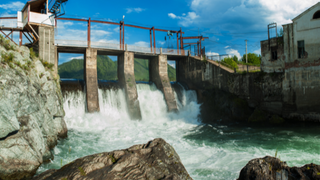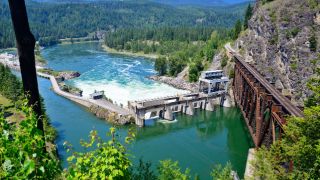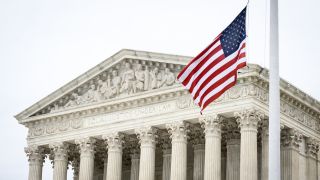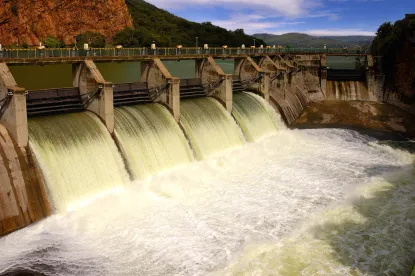Court Rejects Agency's Use of "Worst-Case Scenarios" in Setting ESA Protections
A unanimous panel of the U.S. Court of Appeals for the District of Columbia Circuit (“D.C. Circuit”), in a stinging rebuke to the National Marine Fisheries Service (“Service”), has issued an important decision limiting how the Service may reasonably analyze impacts of a proposed federal action on a listed species under Section 7 of the Endangered Species Act (“ESA”). In Maine Lobstermen’s Ass’n v. National Marine Fisheries Service, commercial fishermen challenged the Service’s rulemaking and biological opinion for the protection of right whales. The Service’s protection plan would have imposed new lobster and crab fishing restrictions which the fishermen argued could result in severe economic dislocation. The Service found that the new rules were necessary to avoid jeopardy to the right whale based on admittedly “worst-case” and “pessimistic” assumptions about the impacts of the commercial fishery. The Court found that nothing in the ESA requires, or even allows, the Service to give “the benefit of the doubt” to listed species in the face of scientific uncertainty. Rather, the statute requires the Service to evaluate whether a proposed federal action is “likely” to jeopardize the species based on “the best scientific and commercial data available,” not speculation meant to favor listed species at all costs.
The Court concluded by reminding the Service of its role under the ESA, in which Congress tasks an agency to serve as a scientific consultant and permitting authority, not with making policy, a task reserved to the action agency. It is not the province of a scientific consultant to pick whales over people. The Service must strive to resolve or characterize the uncertainty through accepted scientific techniques, not jump to a substantive presumption that distorts the analysis of effects and creates false positives. When the Service applies a substantive presumption to distort the analysis, the public can have no confidence that “economic dislocation” is needed to protect a species and is not the result of “speculation or surmise” by overly zealous agency officials.
The case has significant implications for the Service’s application of the ESA to a broad range of federal programs and federally permitted activities. It would appear the Service can no longer simply tell hydroelectric applicants or the Federal Energy Regulatory Commission (“FERC”), for example, that in the absence of definitive scientific data the Service will be forced to take the most “conservative” or “worst-case” approach to assessing impacts of a proposed project on listed species. The D.C. Circuit’s answer to the conundrum of uncertainty is that if the Service “lacks a clear and substantial basis for predicting an effect is reasonably certain to occur . . . the effect must be disregarded in evaluating the agency action.”

Ninth Circuit Affirms EPA's Broad Interpretation of Water Quality Standards under the CWA
In a decision that has direct and indirect implications for the hydroelectric industry, a U.S. Court of Appeals for the Ninth Circuit (“Ninth Circuit”) panel, by a 2-1 vote, has denied the City and County of San Francisco’s petition for review of a U.S. Environmental Protection Agency (“EPA”) final order imposing broad narrative requirements in a National Pollutant Discharge Elimination System (“NPDES”) permit for San Francisco’s Oceanside combined sewer system and wastewater treatment facility. San Francisco contended, among other things, that EPA acted arbitrarily and capriciously and contrary to the Clean Water Act (“CWA”) by including general narrative prohibitions on discharges into waters of the United States. For example, one narrative provision prohibited discharges that “cause or contribute to a violation of any applicable water quality standard” and allowed for more stringent limitations to be imposed in the future in the event water quality standards changed. Another prohibited “pollution, contamination, or nuisance” as broadly defined by the California Water Code.
The panel majority held that general narrative prohibitions are an important enforcement tool where specific pollutant limitations either do not apply or merely establish minimum requirements. In response to San Francisco’s argument that the general narrative criteria were too vague and failed to provide sufficient direction, the Court stated that the numeric and specific narrative limitations in the NPDES permit provided substantial guidance on how to satisfy water quality standards, and that general narrative provisions may be necessary as a “backstop” if the specific limitations fail to achieve compliance with the CWA.
Judge Collins in dissent argued that the general narrative prohibitions in San Francisco’s NPDES permit are inconsistent with the purpose of the CWA to regulate enforceable pollutant discharge limits from individual point sources. The general narrative conditions, in contrast, focus on the overall condition of the receiving waters and San Francisco’s contribution to that overall condition. According to the dissent, this makes the discharger responsible for achieving the overall water quality standards for a receiving body of water with no guidance on how to accomplish that goal. Further, in water bodies already out of compliance with water quality standards, this could result in a complete ban on discharges because any dischargers would be contributing to the receiving water body’s noncompliance.
Hydroelectric projects can be subject to NPDES permitting to the extent they discharge oil, grease, and other contaminants from the powerhouse. In addition, the majority’s reasoning would apply to other regulatory provisions of the CWA including Section 401 water quality certification. Indeed, the majority cited in support of its reasoning the 1994 U.S. Supreme Court opinion in PUD No. 1 of Jefferson County v. Washington Department of Ecology, in which the Court upheld the state agency’s use of “open-ended” criteria using “broad, narrative terms” in issuing a water quality certification for a hydroelectric project seeking a FERC license. The decision thus poses a problem for an applicant that would seek to challenge open-ended, vague conditions in a Section 401 water quality certification.

Biden Administration Announces Proposed Phase Two NEPA Regulations
On July 28, 2023, the Council on Environmental Quality (“CEQ”) announced the “Bipartisan Permitting Reform Implementation Rule,” the Phase 2 Notice of Proposed Rulemaking reforming the implementing regulations of the National Environmental Policy Act (“NEPA”). In this second phase, the Biden administration proposes extensive revisions to the current version of the rule (“2020 Rule”). As NEPA is foundational to the FERC hydropower licensing process, the proposed changes, if adopted, will impact applicants for FERC licenses.
In the proposed rule, CEQ proposes to adopt regulatory changes to implement legislative amendments recently made to NEPA by the Fiscal Responsibility Act of 2023 (“FRA”); restore many of the foundational concepts from the 1978 regulations that were modified or removed by the 2020 Trump-era rulemaking; remove what the Biden administration deems “legally unstable” provisions of the 2020 Rule; and expressly require for the first-time consideration of environmental justice and climate change impacts. Among a broad range of changes are:
- The addition of environmental justice and climate change to the list of environmental consequences that must be considered in a NEPA review. Although many agencies, including FERC, have been evaluating environmental justice and climate change in their NEPA reviews for several years, the explicit requirement to consider these factors does little to resolve the ongoing confusion regarding the extent of the analysis required. FERC has held that in the hydroelectric licensing context, climate change science is not granular enough to predict the impacts on a particular project. FERC already considers the environmental benefits of emissions-free hydropower when issuing licenses.
- The revision of the definition of “major Federal action”—the trigger for environmental review under NEPA—to align with the FRA’s statutory changes, including exclusions codified in the FRA.
- Clarification that while projects may have both beneficial and adverse effects, “only actions with significant adverse effects require an environmental impact statement.”
- A requirement that agencies establish procedures for project sponsors to prepare environmental documents. Although the lead agency remains ultimately responsible for the final content of environmental documents, this proposed change may facilitate faster or more efficient environmental review processes once agencies establish the required procedures. The Energy Policy Act of 1992 already defines the extent to which FERC hydroelectric applicants may aid in the preparation of NEPA documents.
- An explicit recognition that that agencies may include in their alternatives analysis reasonable alternatives not within the jurisdiction of the lead agency. This has the potential to expand the alternatives analysis undertaken by FERC, such as implementation of alternative energy generation and storage technologies. However, FERC typically does not conduct this type of alternatives analysis in its NEPA reviews of hydroelectric projects.
- Removal of the statement “[a]gencies are not required to undertake new scientific and technical research to inform their analyses” from the section of the rule that governs information to be included in the environmental analysis.
Although some of the proposed changes have the potential to reduce some long-standing issues in the NEPA process around delays and litigation, other changes appear to be counterproductive to NEPA streamlining efforts. Furthermore, the effect of many of the proposed changes will ultimately depend on how the individual federal agencies carry out the changes through their own regulations and practices. FERC, as an independent federal agency, is not bound by the CEQ regulations and has its own NEPA regulations, but generally follows the CEQ regulations unless there is a conflict with its statutory authorities.
CEQ is accepting comments regarding the proposed rule through September 29, 2023. Read our detailed VNF alert about the proposed rule here.

Washington High Court Upholds Flooding Rights of FERC Licensee
In Maslonka v. Public Utility District No. 1 of Pend Oreille County, the Washington Supreme Court ruled in favor of Public Utility District No. 1 of Pend Oreille County (“PUD”), rejecting private property owners’ inverse condemnation and tort claims related to the PUD’s Box Canyon Hydroelectric Project (the “Dam”) on the Pend Oreille River in Washington State. The PUD constructed the Dam in 1955 and operates it as a run-of-river facility in compliance with the Dam’s FERC license.
In 1993, with notice that the property occasionally flooded as a result of backwater from the Dam’s operations, the plaintiffs bought 535 acres of pastureland bordering the Pend Oreille River. The land was subject to easements granted by the property owners to the PUD at the time of Dam construction. In 2016, the plaintiffs brought claims for governmental taking via inverse condemnation, as well as negligence, trespass, and nuisance, for shoreline erosion and other damage to their property caused by flooding. The Court found that the plaintiffs failed to establish a new taking occurred since their purchase of the property. Thus, under the “subsequent purchaser rule,” which holds that the right to inverse condemnation belongs to the property owner at the time of taking, the plaintiffs lacked standing to bring an inverse condemnation claim against the PUD. Having been barred by the subsequent purchaser rule, the Court held that plaintiffs could not circumvent the rule by seeking compensation under alternate tort theories. The Court also held that the PUD was entitled to a prescriptive easement on the plaintiffs’ property for that part of their property inundated by the Dam’s operations above the express easements.

Supreme Court Rules Against Navajo Nation in Tribal Water Rights Case
In Arizona v. Navajo Nation, the U.S. Supreme Court rejected the Navajo Nation’s claim that the 1868 treaty establishing the Navajo Reservation required the United States to take affirmative steps to secure water for the Tribe. In a 5-4 opinion, the Court reversed the Ninth Circuit and concluded that, although it is well-settled that reservations of lands for Indian Tribes implicitly include the right to use water necessary to accomplish the purposes of the reservation, the Navajo Nation could not maintain its action for breach of trust because the relevant 1868 treaty between the Navajo Nation and the United States did not include language imposing an affirmative duty on the United States to secure that water.
The Navajo Nation brought a claim related to the Colorado River, asserting that the “permanent home” language from the 1868 treaty included a water supply adequate to sustain agriculture and livestock on the Reservation. According to the Navajo Nation, by failing to take affirmative steps to secure water for those purposes, the United States, which holds water rights in trust for the Navajo Nation, had breached its fiduciary duty.
The Court concluded that, to sustain its breach-of-trust claim, the Navajo Nation needed to identify the text of a treaty, statute, or regulation imposing on the United States an affirmative duty to secure water for the Navajo Nation. Although the 1868 treaty imposed certain affirmative duties on the federal government, including for the supply of seeds and agricultural implements for up to three years, it did not contain language recognizing an affirmative duty to secure water for such purposes. According to the Court, although the United States has a general trust relationship with Indian Tribes, including the Navajos, that relationship does not include “all the fiduciary duties of a private trustee,” and the Court would not infer a conventional trust relationship with regard to a particular trust asset (such as water) without express language creating that duty.
Notably, this could affect hydropower developments when dealing with challenges to water use brought by Tribal nations by eliminating some insecurity as to the viability and extent of such claims. It is also consistent with FERC’s longstanding view that it fulfills its trust responsibilities to Tribes by accommodating Tribal interests to the extent Congress has directed in the Federal Power Act and not by prioritizing those interests.
See our full alert on this case here.





 />i
/>i

